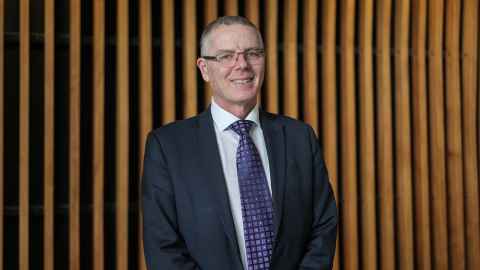Barriers persist for Māori and Pacific medical students
8 December 2023
New research shows Māori and Pacific medical students remain underrepresented in Aotearoa New Zealand.

Decades of efforts have boosted the numbers of Māori and Pacific doctors, but new research shows these ethnicities remain underrepresented in the country’s medical schools.
The proportion of Māori doctors in New Zealand has increased from 2.3 percent in 2000 to 4.7 percent in 2023. However, this remains well below the proportion of Māori in the population at 16.5 percent.
Similarly, the proportion of Pasifika doctors is slowly increasing, to 2.2 percent of all doctors, but below the Pasifika population of 8.2 percent.
The study also found poverty is a barrier to studying medicine across all demographic groups, and rural-background students are underrepresented in medicine.
“To have the greatest positive impact on health outcomes, the population of doctors as a whole should mirror the society which they take an oath to serve,” says Professor Warwick Bagg, acting dean of the Faculty of Medical and Health Sciences.
“To achieve this, those who are enrolled in medical school should broadly mirror the demographics of the people they will ultimately work for.
“Moreover, medical education institutions have an obligation to improve the health of the communities they serve," Professor Bagg says.
“The underrepresentation of Māori doctors and Pacific doctors has contributed to profoundly negative impacts for these populations,” the researchers state.
For example, in New Zealand, Māori life-expectancy is reduced by more than seven years compared with non-Māori.
To help address the medical workforce shortfall, both universities instigated equity policies, starting in the 1950s at Otago and 1970s at the University of Auckland, which are starting to shift the dial.
At the University of Auckland, in 2022, 30 percent of the cohort admitted to study medicine were admitted via the MAPAS equity-targeted pathway.
At the University of Otago, the number of Māori graduates has increased markedly over the past decade, with the graduating proportion of Māori students now at or above population parity at around 15 percent.
A declining rural medical workforce is also problematic in New Zealand. Research has found medical students from rural and regional backgrounds are more likely to return and work rurally or in the regions.
“In order to provide high quality care to Māori and New Zealand's diverse communities. It is essential that medical schools continue to recruit from those same communities,” says Professor Peter Crampton, of the University of Otago.
“We know top quality healthcare is reliant on a suitable mix of people in the health professions. So, for example, top quality healthcare for women is dependent on there being a representative mix of women in the health workforce. And same applies in the context of rural, in the context of Pacific or Māori and so on.”
The paper is one of a series seeking to understand the extent to which health students mirror society in the expectation this will flow through to the workforce and to quality healthcare.
Earlier this year, a study of first year students across all healthcare professions found a systematic underrepresentation of students who identify as Māori and Pacific, and students who come from low socioeconomic and rural backgrounds. See British Medical Journal Open.
Compounding a lack of representation in the medical workforce is the number of doctors imported to work in New Zealand, says Professor Bagg.
“To address the issue of too many doctors being imported from overseas, the Government must fund more New Zealanders to study medicine,” Professor Bagg says.
The researchers conclude that selection policies need to be reviewed to ensure that communities in greatest need of doctors are prioritised for enrolment into medicine. In particular, the impact of low socioeconomic status should be factored into selection decisions.
Media contact
FMHS media adviser Jodi Yeats
M: 027 202 6372
E: jodi.yeats@auckland.ac.nz